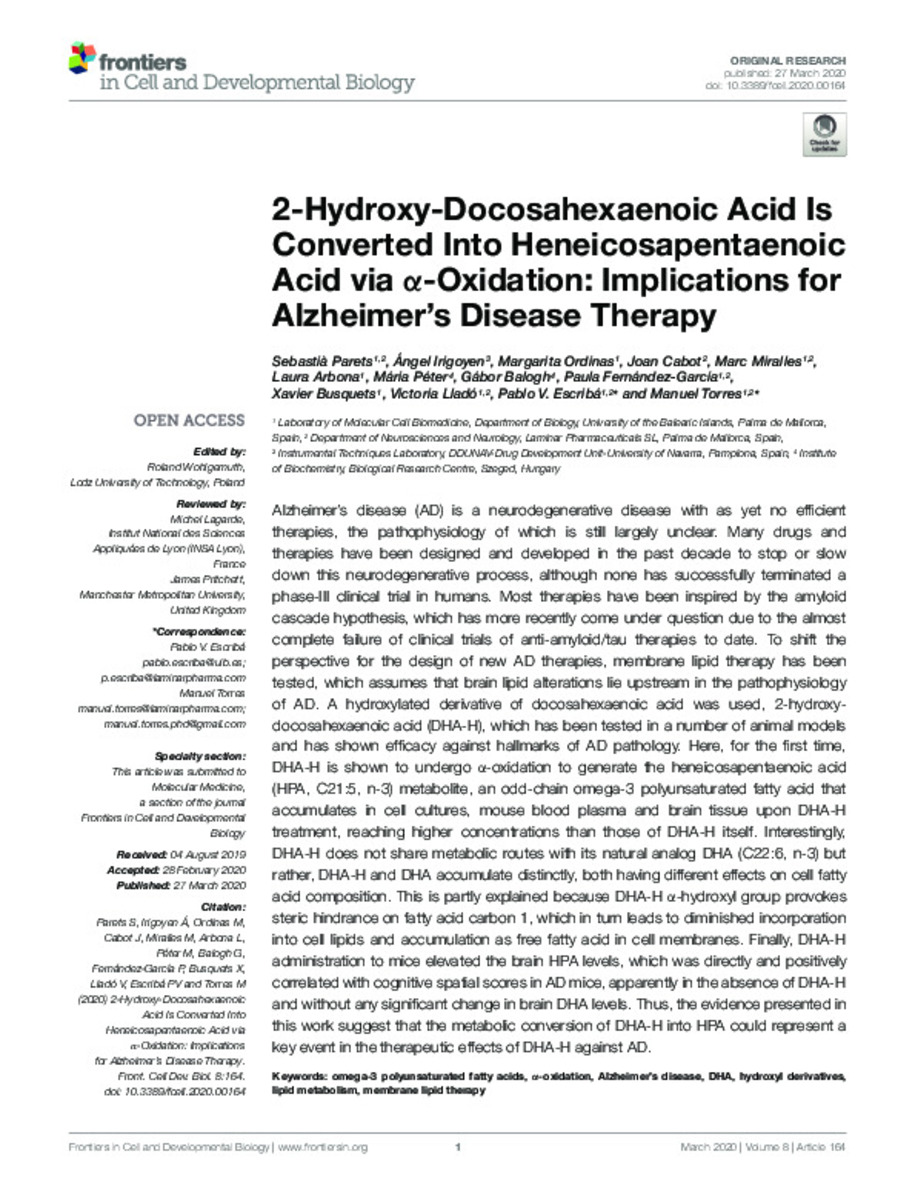2-Hydroxy-Docosahexaenoic Acid Is Converted Into Heneicosapentaenoic Acid via α-Oxidation: Implications for Alzheimer’s Disease Therapy
Palabras clave :
Omega-3 polyunsaturated fatty acids
α-oxidation
Alzheimer’s disease
DHA
Hydroxyl derivatives
Lipid metabolism
Membrane lipid therapy
Fecha de publicación :
2020
Editorial :
Frontiers in Cell and Developmental Biology
Proyecto:
RTC-2015-3542
RTC-2015-4094
PROCOE/5/2017
ES01/TCAI/53_2016
ES01/TCAI/21_2017
ES01/TCAI/24_2018
CLINGLIO 755179
PTQ-17-09056
Nota:
This is an open-access article distributed under the terms of the Creative Commons Attribution License (CC BY).
Cita:
Parets, S. (Sebastià); Irigoyen, A. (Angel); Ordinas, M. (Margarita); et al. "2-Hydroxy-Docosahexaenoic Acid Is Converted Into Heneicosapentaenoic Acid via α-Oxidation: Implications for Alzheimer’s Disease Therapy". Frontiers in Cell and Developmental Biology. 8 (164), 2020,
Aparece en las colecciones:
Estadísticas e impacto
0 citas en

0 citas en

Los ítems de Dadun están protegidos por copyright, con todos los derechos reservados, a menos que se indique lo contrario.







